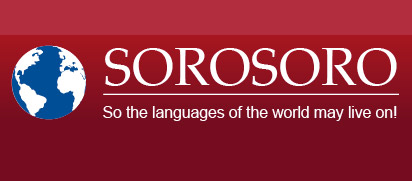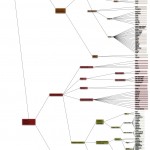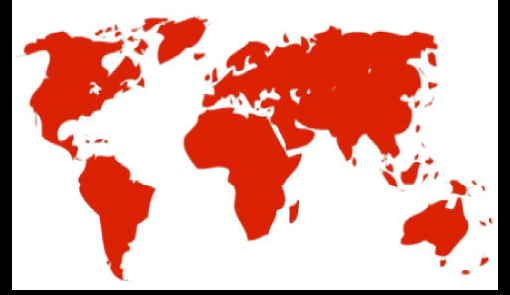Print  |
|

Nilo-Saharian languages
Where are Nilo-Saharan languages spoken?
These languages are spoken
– in Eastern Africa, mainly along the Lower Nile (Sudan and Ethiopia) and all the way to Tanzania and Kenya ;
– in the centre, in the Democratic Republic of Congo and along the Chari River (Central African Republic and Chad) ;
– to the West, in Benin and Nigeria ;
– in the North-West, in an area going from Algeria to Mali.
Total number of speakers (estimates)
Approximately 11 million according to SIL’s website ethnologue.com
Classification:
Nilo-Saharian languages tree (click to enlarge)
This group has, today 175 languages.
Saharan languages
Zaghaw (alternative name: Beria), Kanembu, Kanuri, Dazaga, Tedaga.
Fur Languages
Amdang, Fur
Central Sudanic
Kunama, Berta
Central Eastern Branch or Lendu-Mangbetu
Lendu
Bendi, Lendu, Ngiti
Mangbetu
Asoa, Lombi, Mangbetu
Mangbetu-Efe
Efe, Lese, Mamvu, Mangbutu, Mvuba, Ndo
Moru-Madi
Aringa, Avokaya, Keliko, Logo, Lugbara, Omi, Moru, Ma’di, Southern Ma’di , Olu’bo
Central Western Branch or Bongo-Kresh
Bongo-Bagirmi
Bongo, Baka, Mo’da, Morokodo, Nyamusa-Molo, Beli, Jur Modo, Mittu, Furu, Gula, Yulu, Bagirmi, Berakou, Disa, Gula, Jaya, Kenga, Morom, Naba, Sara Kaba Démé, Sara Kaba Náà, Kulfa, Sara Dunjo, Sara Kaba, Bedjond, Dagba, Gor, Gulay, Horo, Kaba, Laka, Mango, Mbay, Ngam, Ngambay, Sar, Lutos, Vale, Birri, Fongoro, Sinyar,
Kresh
Aja, Gbaya
Eastern Sudanic (see above)
Eastern Branch
Eastern Jebel
Aka, Kelo, Molo, Gaam
Daju
Logorik, Shatt, Baygo, Dar Daju Daju, Dar Fur Daju, Dar Sila Daju, Njalgulgule
Temein
Temein, Tese
Surmic
Majang, Kwegu, Me’en, Mursi, Suri, Didinga, Narim, Murle, Tennet, Kacipo-Balesi
Nilotic
Eastern Nilotic
Bari, Kakwa, Mandari, Dongotono, Lango, Lokoya, Lopit, Otuho, Maasai, Ngasa, Samburu, Teso, Karamojong, Nyangatom, Toposa, Turkana
Southern Nilotic
Kupsabiny, Sabaot, Kipsigis, Markweeta, Terik, Aramanik, Keiyo, Kisankasa, Mediak, Mosiro, Nandi, Tugen, Okiek, Pökoot, Datooga, Omotik.
Western Nilotic
Dinka, Nuer, Anuak, Belanda Bor, Shilluk, Thuri, Päri, Adhola, Kumam, Alur, Acholi, Lango , Dholuo, Lwoo, Burun, Kenjeje (alternative names: Yaali), Masalit, Subarkhal, Runga-Kibet, Maba, Marfa, Karanga, Jumjum, Mabaan.
Western Branch
Nyimang
Afitti, Ama,
Tama
Mararit, Assangori.
Nara
Nara
Nubian
Birked, Kenuzi-Dongola, Ghulfan, Kadaru, Dair, Dilling, El Hugeirat, Karko, Wali, Nobiin, Midob.
Kuliak Languages
Ik
Ngangea-So
Nyang’i
Soo
Comments on the classification
We have based our classification on the work of Greenberg, reviewed by Bender, which is regarded as conventional. However, we have used Dimmendaal’s work for Koman and Songhay, which he leaves out of the Nilo-Saharan group. Also, contrary to Bender, Dimmendaal does not treat Kadu as a Nilo-Saharan subgroup, but instead as an independent language family (isolate).
Dimmendaal (to appear) considers that the Kuliak languages are of the primary branch of the Nilo-Saharan. These languages are otherwise generally classified in the eastern branch of the eastern Sudanic languages.
It should be noted that internal and external classifications of this group are subject to controversy, the very existence of the group being sometimes questioned.
Are Nilo-Saharan languages endangered ?
This section will be developed subsequently.
Ethnographic elements
This section will be developed subsequently.
Linguistic details
This section will be developed subsequently.
Sources
Gerrit Dimmendaal, 2008. “Language Ecology and Linguistic Diversity on the African Continent“, Language and Linguistics Compass 2/5:842.
Dimmendaal, Gerrit J. 2007. “Eastern Sudanic and the Wadi Howar and Wadi el Milk Diaspora”. Sprache und Geschichte in Afrika 18: 37-67.
Dimmendaal, Gerrit J. Dimmendaal. To appear. “Nilo-Saharan and its limits”. In Jean-Marie Hombert and Gerard Philippson (eds.), The Genetic Classification of African Languages Revisited.
Joseph H. Greenberg. 1963. The Languages of Africa, International journal of American linguistics,
Bender, Lionel. 2000. “Nilo-Saharan” in African Languages – An Introduction, Bernd Heine and Derek Nurse (eds), Cambridge University Press
Please do not hesitate to contact us should you have more information on this language: contact@sorosoro.org









